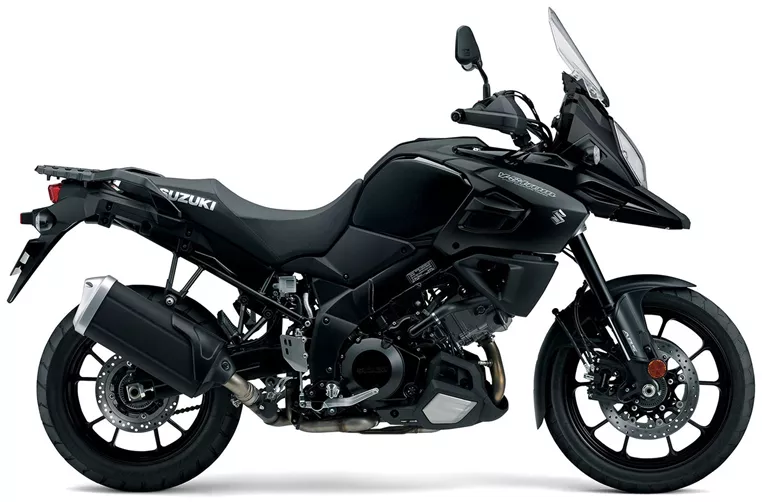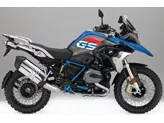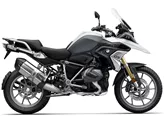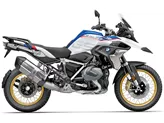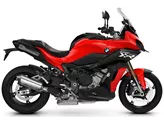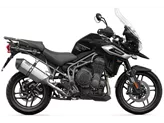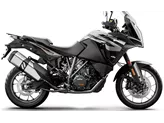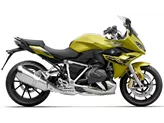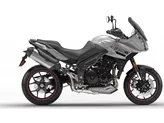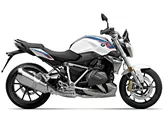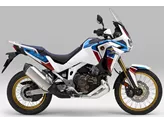BMW R 1250 GS 2020 vs. Suzuki V-Strom 1000 2019

BMW R 1250 GS 2020

Suzuki V-Strom 1000 2019
Overview - BMW R 1250 GS 2020 vs Suzuki V-Strom 1000 2019
The BMW R 1250 GS 2020 and the Suzuki V-Strom 1000 2019 are both popular enduro motorcycles that offer a range of features and capabilities.
Starting with the BMW R 1250 GS 2020, it is equipped with a powerful boxer engine that delivers an impressive 136 HP and 143 Nm of torque. This engine provides excellent acceleration and a thrilling riding experience. The bike also features a telelever front suspension with a diameter of 37 mm and a travel of 190 mm, which ensures a smooth and comfortable ride even on rough terrains. The suspension can be adjusted for preload to suit the rider's preferences. The rear suspension is a single swing arm with a monoshock absorber and a travel of 200 mm. The chassis of the R 1250 GS is made of steel and has a load-bearing engine design, which enhances stability and handling. The bike is equipped with double disk brakes at the front, ensuring reliable and efficient braking performance. In terms of advanced rider assistance systems, the R 1250 GS features ABS, anti-slipping control, riding modes, and ride by wire technology. The bike has a 19-inch front tyre diameter, a 170 mm rear tyre width, and a 17-inch rear tyre diameter. The wheelbase is 1525 mm, and the seat height is 850 mm. The R 1250 GS has a kerb weight of 249 kg and a fuel tank capacity of 20 liters.
On the other hand, the Suzuki V-Strom 1000 2019 is equipped with a V2 engine that delivers 101 HP and 101 Nm of torque. While not as powerful as the BMW R 1250 GS, the V-Strom 1000 still offers a satisfying riding experience with its characterful engine. The front suspension is an upside-down telescopic fork with a diameter of 43 mm and a travel of 160 mm. The suspension can be adjusted for compression, preload, and rebound to suit the rider's preferences. The rear suspension is a swing arm with a monoshock absorber and a travel of 160 mm. The chassis of the V-Strom 1000 is made of aluminum and has a twin tube design, which provides stability and handling. The bike is equipped with double disk brakes at the front, ensuring reliable braking performance. In terms of advanced rider assistance systems, the V-Strom 1000 features ABS and traction control. The bike has a 19-inch front tyre diameter, a 150 mm rear tyre width, and a 17-inch rear tyre diameter. The wheelbase is 1555 mm, and the seat height is 850 mm. The V-Strom 1000 has a kerb weight of 232 kg and a fuel tank capacity of 20 liters.
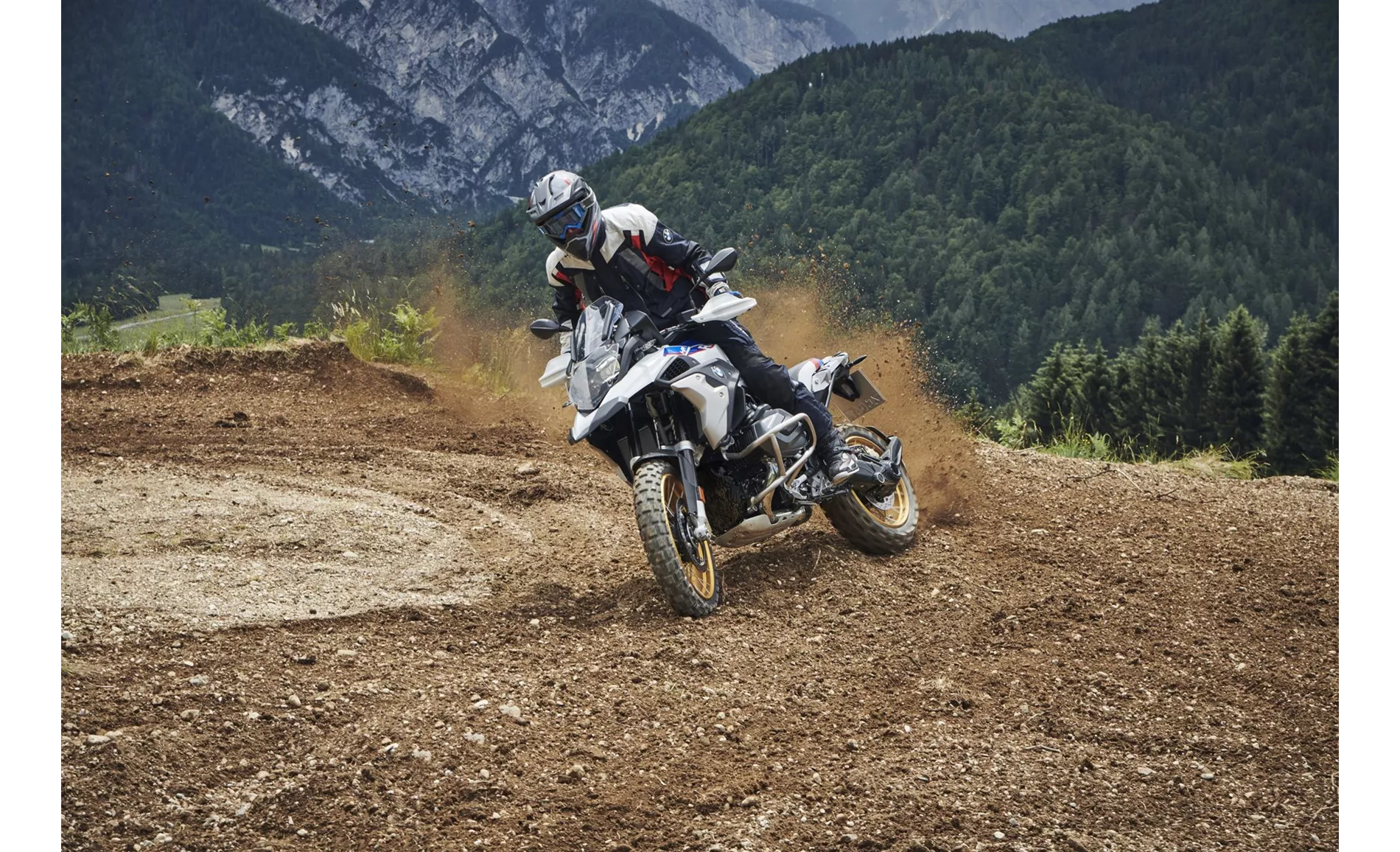
BMW R 1250 GS 2020
In terms of strengths, the BMW R 1250 GS 2020 stands out with its extremely high-torque boxer engine, which delivers excellent performance. The bike also has a comfortable seating position, making it suitable for long-distance rides. The braking performance is stable, and the bike offers good weather protection. The R 1250 GS comes with a standard colour TFT display and LED headlights, enhancing visibility and providing a modern look.
On the other hand, the Suzuki V-Strom 1000 2019 has a V2 engine that is full of character, providing a unique riding experience. The bike features mature technology and offers stable handling. The ABS curves feature ensures safe braking in various conditions. The seating position is comfortable, and the instruments are easy to read. The V-Strom 1000 is considered the perfect touring enduro for purists.
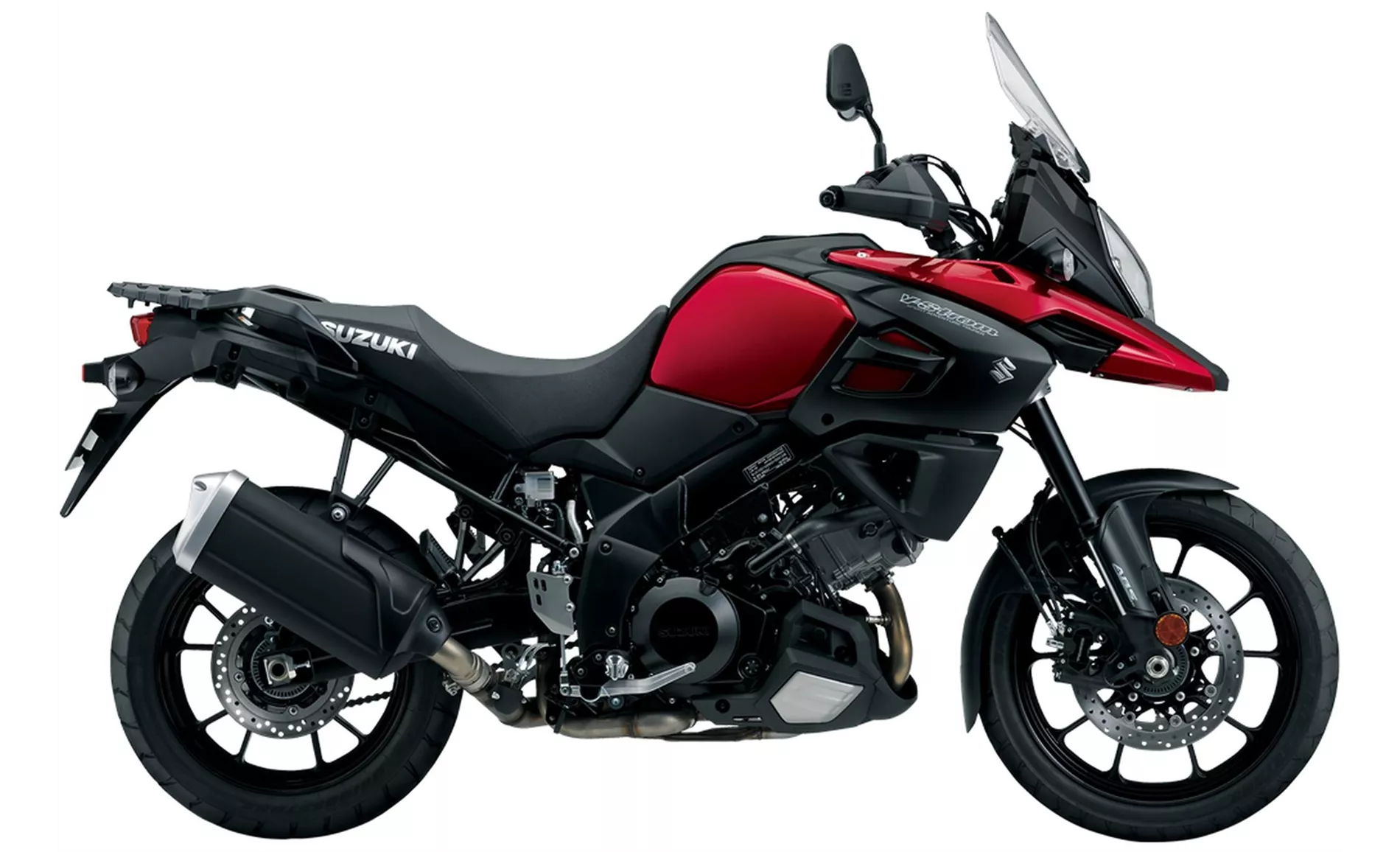
Suzuki V-Strom 1000 2019
However, the BMW R 1250 GS 2020 does have some weaknesses. The standard equipment is manageable, and there is a long surcharge list for additional features. Some may find the bike's appearance to be jagged with little elegance.
Similarly, the Suzuki V-Strom 1000 2019 has its weaknesses. The bike is not technologically up to date, and its electronics package cannot keep up with the competition.
In conclusion, both the BMW R 1250 GS 2020 and the Suzuki V-Strom 1000 2019 offer their own strengths and weaknesses. The BMW R 1250 GS excels in terms of power, comfort, and advanced features, while the Suzuki V-Strom 1000 offers a unique character and stable handling. Ultimately, the choice between the two will depend on the rider's preferences and priorities.
Technical Specifications BMW R 1250 GS 2020 compared to Suzuki V-Strom 1000 2019
Pros and Cons in comparison
Pros and Cons in comparison
BMW R 1250 GS 2020
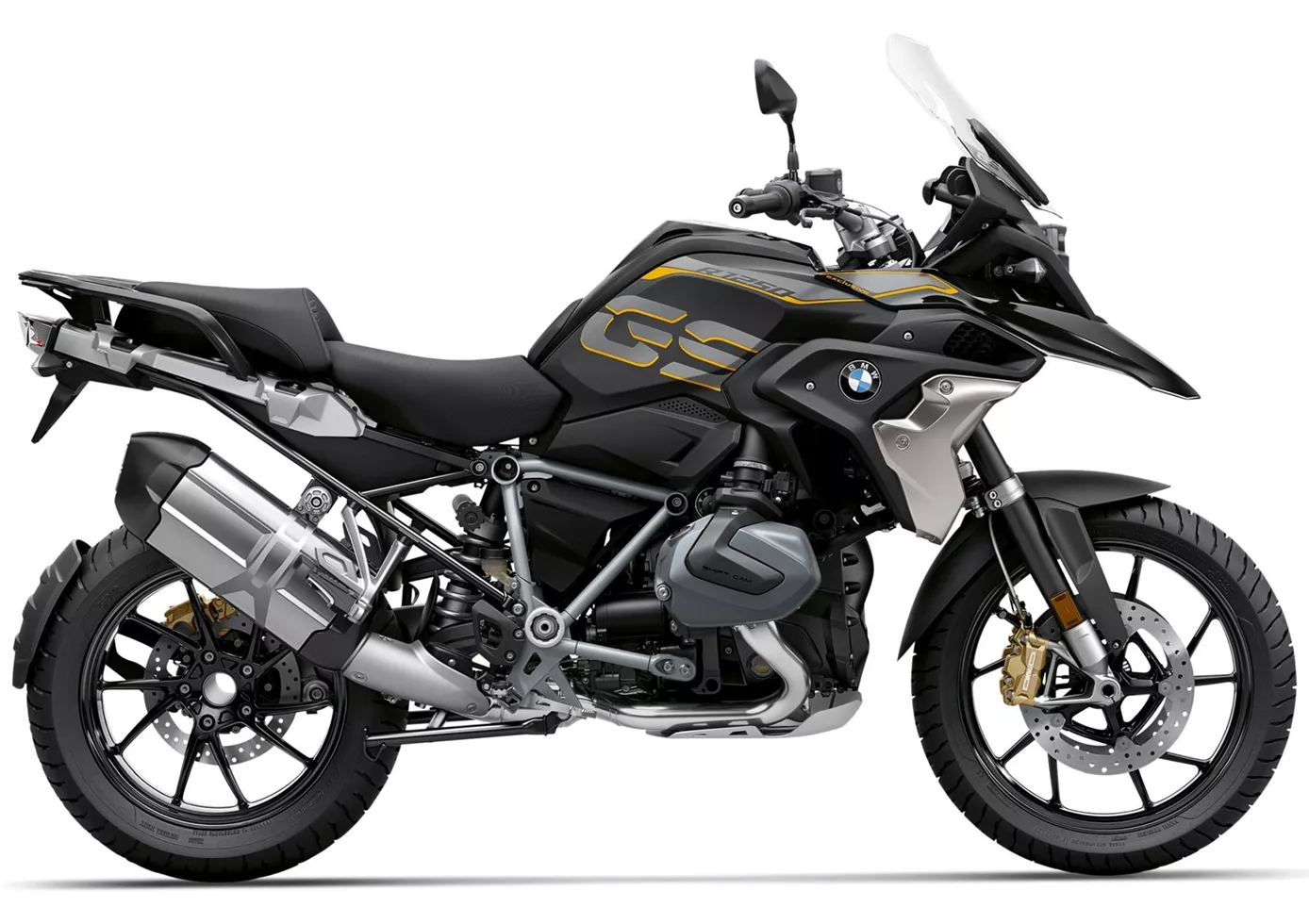
La BMW R 1250 GS est l'évolution logique de la R 1200 GS - logique surtout parce qu'on ne peut pas s'attendre à ce qu'une moto aussi populaire soit radicalement modifiée. En conséquence, le design est modifié avec précaution et les options connues sont conservées pour le châssis et l'électronique. Le nouveau nom R 1250 GS promet cependant un nouveau moteur - et il a effectivement de quoi faire ! 136 ch à 7750 tours et pas moins de 143 newtons-mètres de couple maximal à 6250 tours, c'est une véritable bombe ! BMW rénove ainsi presque parfaitement la grande GS : elle reste clairement identifiable, dispose d'un peu plus d'électronique de série, d'une liste de prix supplémentaires toujours aussi longue (que la clientèle aime cocher de A à Z) et d'un moteur encore plus performant et souverain - que peut-on demander de plus ?
Suzuki V-Strom 1000 2019
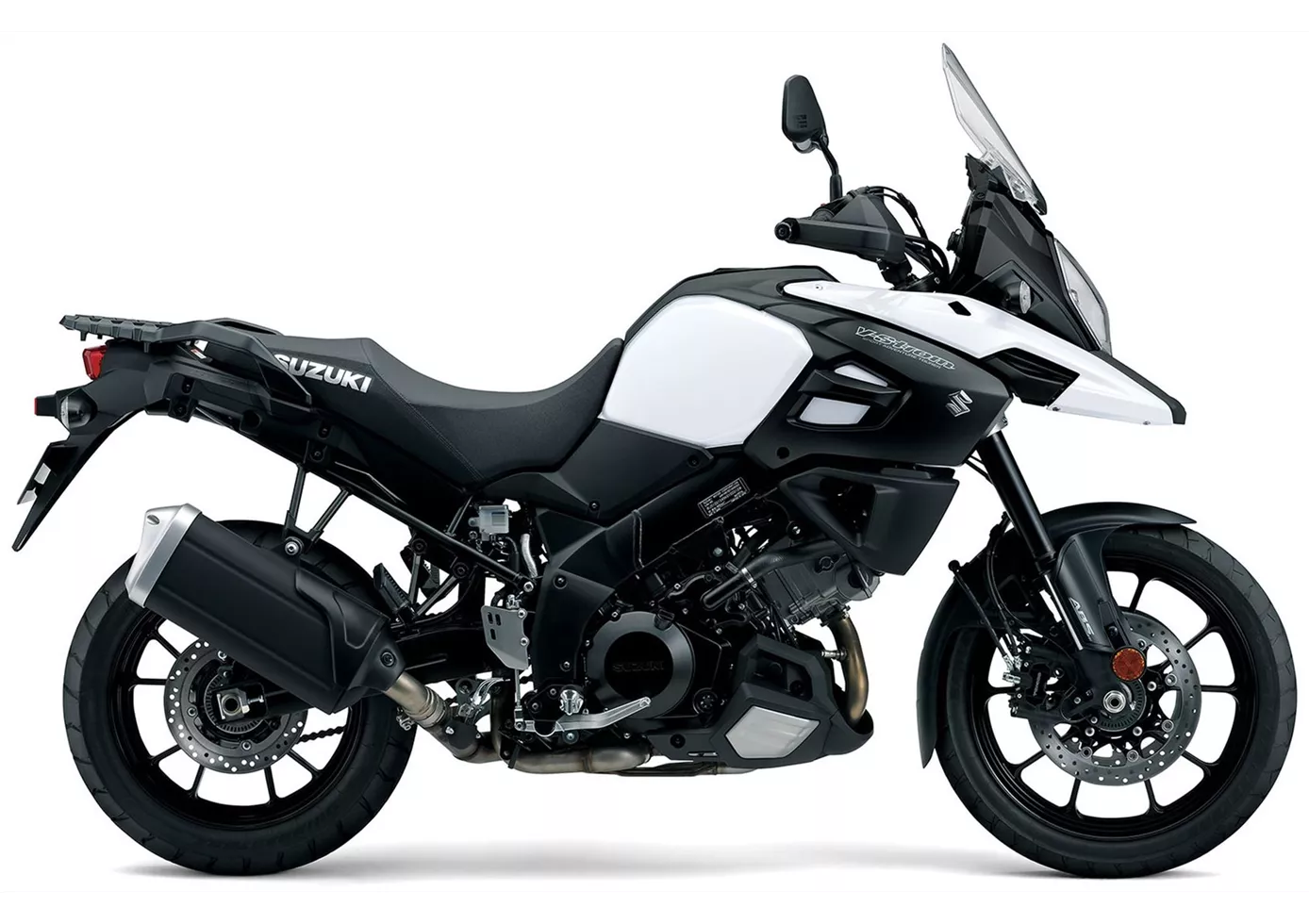
Même si Suzuki n'a peut-être pas mis autant d'efforts dans le développement de la V-Strom que la concurrence dans les enduros de voyage, la Suzuki peut utiliser cet état de fait à son avantage. Dans un monde où les packs électroniques sont nombreux, elle se présente encore de manière très puriste dans l'année-modèle 2019, seul l'ABS en virage laisse entrevoir une innovation. De nombreux clients souhaitent une moto simple et c'est précisément à ce groupe cible que s'adresse la V-Strom 1000. Son V2 robuste dégage un caractère sans fin et est un compagnon à l'épreuve des balles grâce à des années d'essais. En combinaison avec le châssis puissant et la position assise détendue, on obtient avec la Suzuki V-Strom 1000 une moto d'aventure à la conduite sportive qui s'oppose à la numérisation des motos dans le monde actuel.
Price Comparison Avarage Market Price BMW R 1250 GS vs Suzuki V-Strom 1000
There are a few key differences between a BMW R 1250 GS 2020 and a Suzuki V-Strom 1000 2019. In terms of price, the actual average price of a BMW R 1250 GS 2020 is about 84% higher. A BMW R 1250 GS 2020 experiences a loss of 590 USD in one year of ownership. This is offset by a loss of 1,560 USD for a Suzuki V-Strom 1000 2019. Compared to Suzuki V-Strom 1000 2019 there are more BMW R 1250 GS 2020 bikes available on the 1000PS.de Marketplace, specifically 71 compared to 7. It takes less time to sell a BMW R 1250 GS with 43 days compared to 113 days for a Suzuki V-Strom 1000. Since model year 2019 1000PS.de editors have written 50 reviews for the BMW R 1250 GS and 40 reviews for the Suzuki V-Strom 1000 since model year 2005. The first review for the BMW R 1250 GS was published on 9/19/2018 and now has more than 305,600 views. This compares to more than 6,300 views for the first review on Suzuki V-Strom 1000 published on 7/23/2002.

